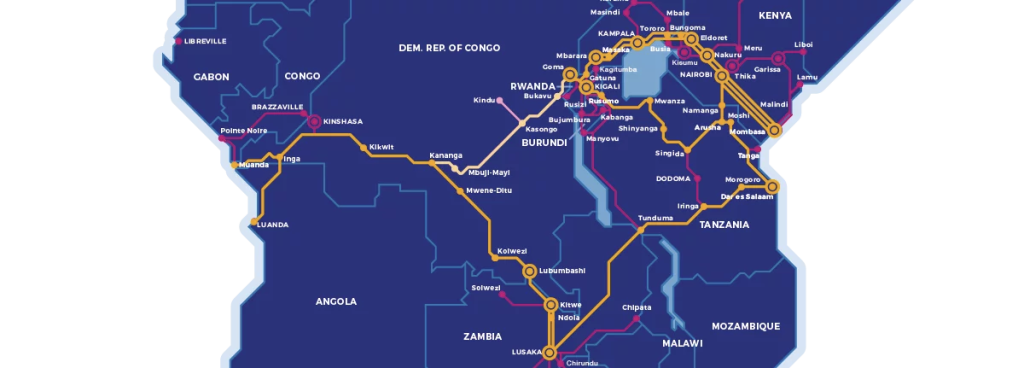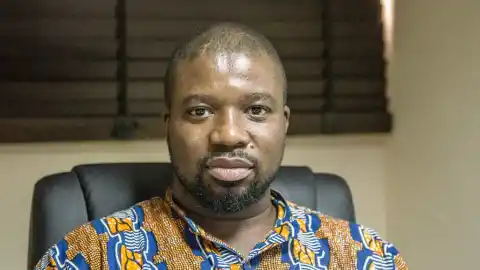A series of submarine fiber cable cuts this year have called into question the resilience of Africa’s internet infrastructure and its ability to serve the tech ventures as they scale up their operations across the continent.
The current generation of tech founders are building applications that rely on the network layer so it needs to be resilient even though it has redundancy built into it – as I indicated on this panel discussion on Africa’s internet resources that focused on the internet issues in Ghana. It is important to underscore that these disruptions are necessary to allow us to build the necessary resilience now so the expanding tech ventures have a solid base to build upon.
The first incident took place on 24th February 2024 when Seacom, a submarine fiber cable on the east and south coast of Africa suffered a disruption to its connectivity services because of breakage on a segment of its cable on the bottom of the red sea.
The TGN-EA, EIG and AAE-1 submarine cables were also affected by the incident. On the 14th of March 2024, a massive second Internet outage in West and Central Africa was due to cuts to four submarine fiber cables namely, WACS, MainOne, SAT3, ACE, off the coast of Abidjan, Cote d’Ivoire. The affected countries included Benin, Burkina Faso, Cameroon, Cote d’Ivoire, Gabon, Gambia, Ghana, Guinea, Lesotho, Liberia, Namibia, Niger, Nigeria, South Africa, and Togo.
The third incident occurred on 12th May 2024, when the 10,000 kilometer cable, EASSy, and the 17,000 kilometer cable Seacom both showed faults, cutting all submarine fiber capacity which affected Tanzania, Kenya, Rwanda, Uganda, Malawi, Mozambique, and Madagascar.

The impact of these outages was significant because multiple cables were affected at the same time in the absence of resilience. This is in contrast with previous incidents where different cables where affected at different times – in these instances the other cables served as redundancy so the effects were not largely felt.
From 2001 till 2024, twenty-five subsea cables have been built around the continent of Africa as per the map below from Many Possibilities – these cables were built with redundancy in mind to ensure that if one cable experiences disruptions the others could take over the traffic until repairs could be made. Over the years, some of these cables have been cut or experienced disruptions but due to the built-in redundancy, in most cases the outages were not felt. However, the recent cuts and disruptions to multiple cables at the same time has had a more significant impact suggesting that a different approach may be needed.
For example, this map shows the four submarine cables converging along the coast of Cote d’Ivoire that were all simultaneously damaged because of a single rockslide causing the widespread outage of internet traffic in West Africa. So having multiple undersea cable routes is equally important.

The existing infrastructure needs to be expanded to include a combination of multiple routes submarine and terrestrial fiber, satellites and more locally cached content as well as Internet eXchange Points (IXPs) in the countries and between the countries allowing local Internet connectivity to continue when connections to the outside world are broken. Below is the map of terrestrial fiber connectivity between various African countries and within them as well.
Evidence of massive gaps between and within the countries is clear hence internet traffic routing on the continent is lacking. In many instances local traffic is still being routed outside the continent. Hence my call in this op-ed in 2020 for us to focus our efforts more on building terrestrial fiber infrastructure. We also need more transparency in this regard and the work by Stephen Song on an Open Data standard for describing terrestrial fibre networks stands out.

African Terrestrial Fiber Network by NSRC @ https://afterfibre.nsrc.org/#close
For example, DR Congo in Central Africa, could serve as a major nexus for pan-Africa transit because it is perfectly situated to connect East, West, North and Southern Africa. Below is a Liquid Technologies fiber map in DR Congo connecting the main cities of Kinshasa, Inga, Muanda, Kikwit, Kananga, Lubumbashi, etc but more importantly connecting to the neighboring countries of Congo Brazzaville, Angola, Zambia, Tanzania, Rwanda, Burundi, etc.
The Namibia to Mozambique via Joburg terrestrial cable that was recently unveiled by the Paratus Group (840km trans Kalahari route) would offer a new alternative for Joburg to Europe traffic avoiding routing via Cape Town and thus minimizing the concentration risk posed by the many land stations there.

On the back of President William Ruto’s state visit to the United States, Google, on 23rd May 2024, announced a new fiber project called Umoja that would not only connect several African countries but also provide the first direction connection between Africa and Australia.
Umoja would start from Kenya and go to Uganda, Rwanda, DR Congo, Zambia, Zimbabwe and South Africa where it would connect to the Equiano cable through Africa Connect, forming the Google Cloud Region, leveraging the terrestrial fiber infrastructure that Liquid Technologies has built over the years, before going through the Indian Ocean to Australia.
This is part of the one billion investment commitment Google made to the continent in 2021. On the eve of the visit of President Ruto, 22nd of May 2024, Microsoft also announced a billion-dollar investment together with G24 to build a state-of-the-art green data center to host Microsoft Azure in the East Africa Regions Cloud.
This would enable the hosting of local content on the continent and minimize the need to always get such content from outside the continent. Other data centers are being built across the continent by the likes of ONIX, PAIX, Africa Data Centers, etc. – these are part of the infrastructure needed to increase the resiliency of the connectivity across the continent.
In April 2024, two months after its cable disruption in the Red Sea, Seacom partnered with OneWeb to launched a low-earth orbit (LEO) satellite that will buff up data connectivity in Africa. Starlink retains the top spot as the main satellite internet provider, despite facing regulatory hurdles in some African countries. Other satelitte providers like Intelsat, 03B, etc are also beaming internet signals to the continent. Although satellite internet does not rely on local base stations or infrastructure, it is not invincible. Last week, satellite internet users also experienced outages due to a serious geomagnetic storm that affected orbital infrastructure.
The African Internet eXchange System (AXIS) which was founded by the Africa Internet Services Providers Association (AfrISPA) and implemented by the AU is growing the Internet fabric by increasing the routing of local traffic on the continent. This has led to the formation of the African IXP Association (AFIX) a group of Internet exchange point operators from across Africa, brought together by a shared need to coordinate and exchange knowledge. According to AFIX, there are currently 55 active IXPs located in 47 cities in 36 countries in Africa with their respective internet peering traffic here.
More terrestrial fiber cables, coupled with diverse cable landing points as well as multiple routes for submarine fiber cables coupled with more satellite, hosting of local content and routing of local traffic locally are needed for the increasing resiliency across Africa.





